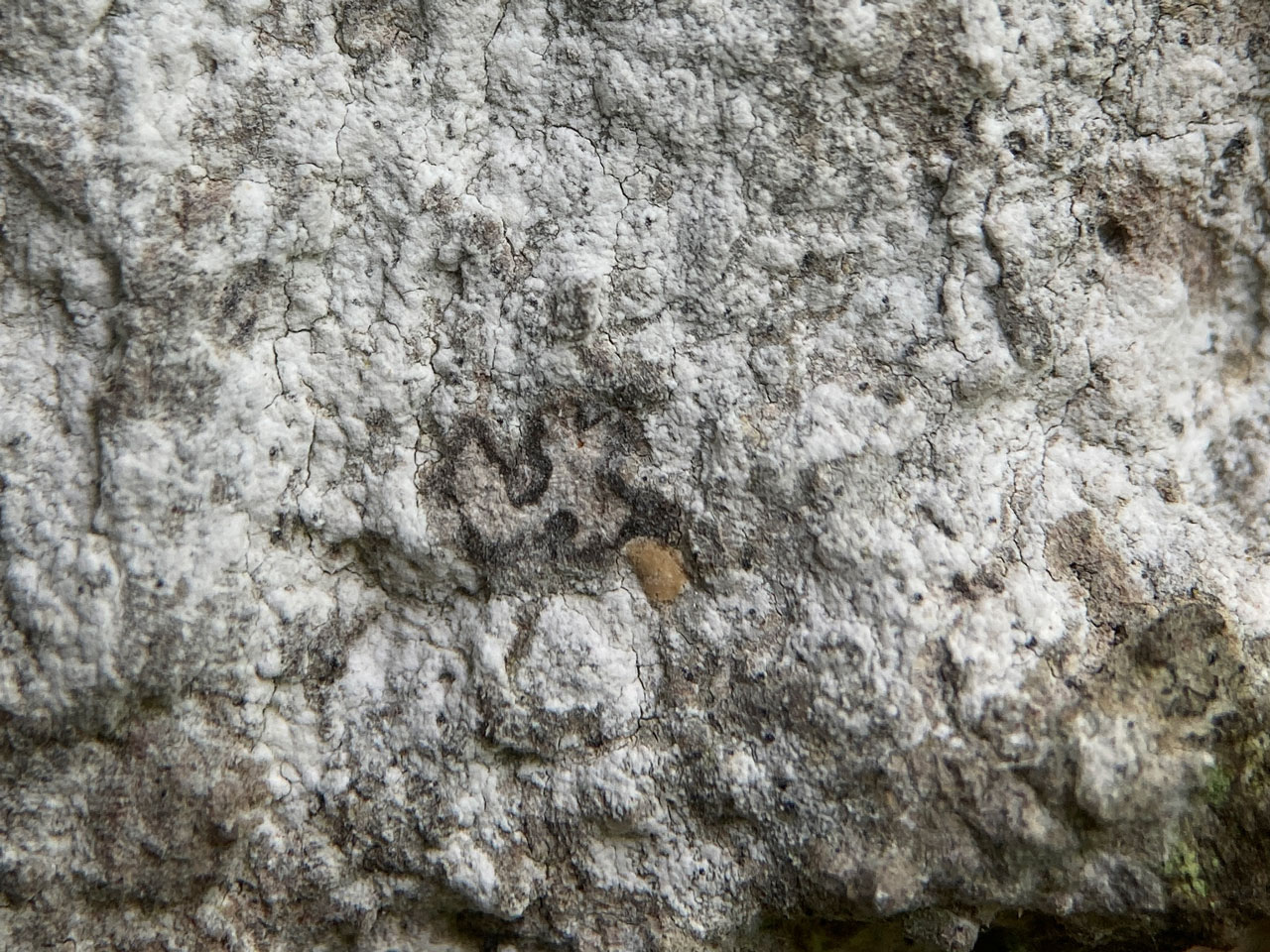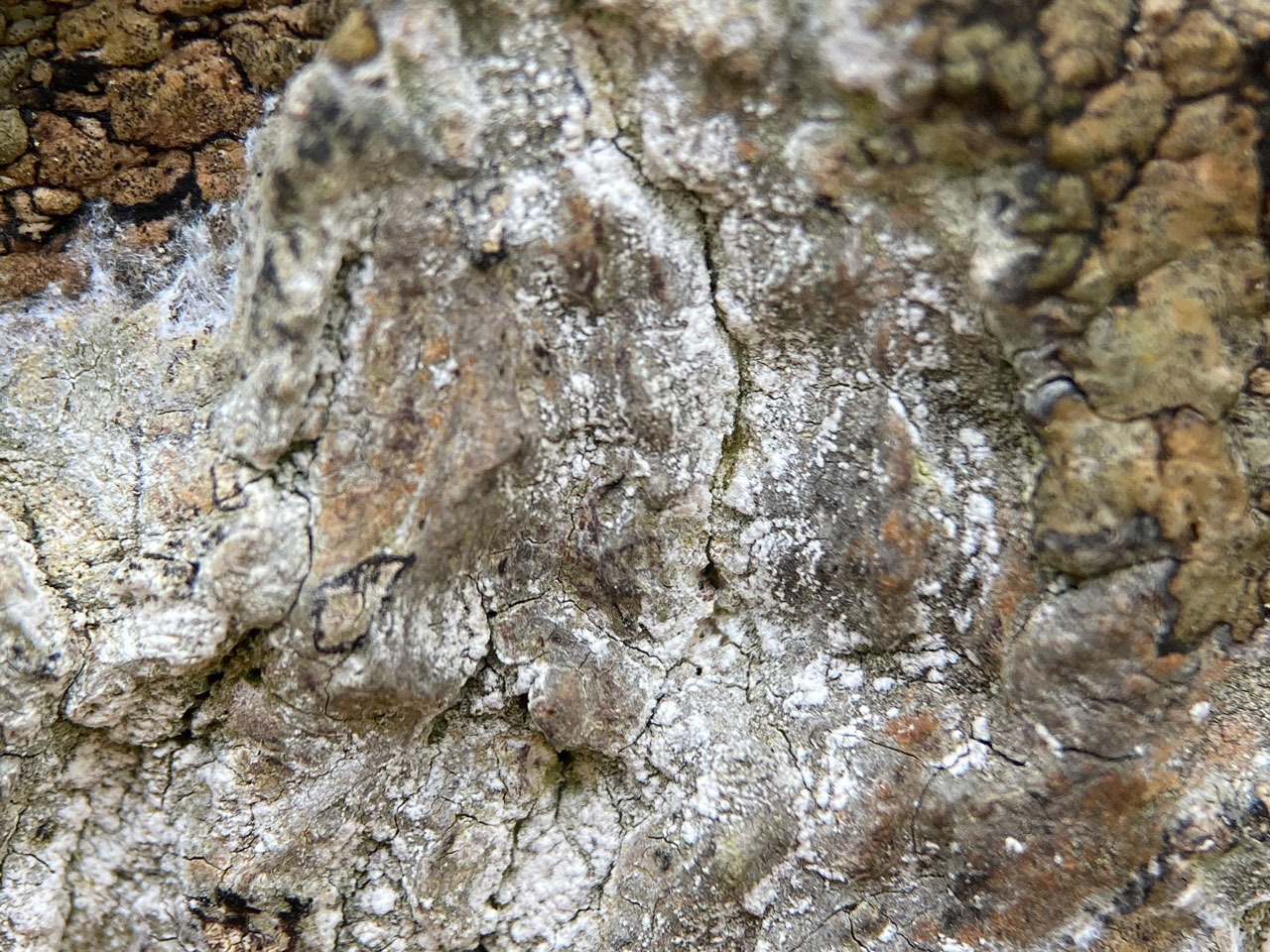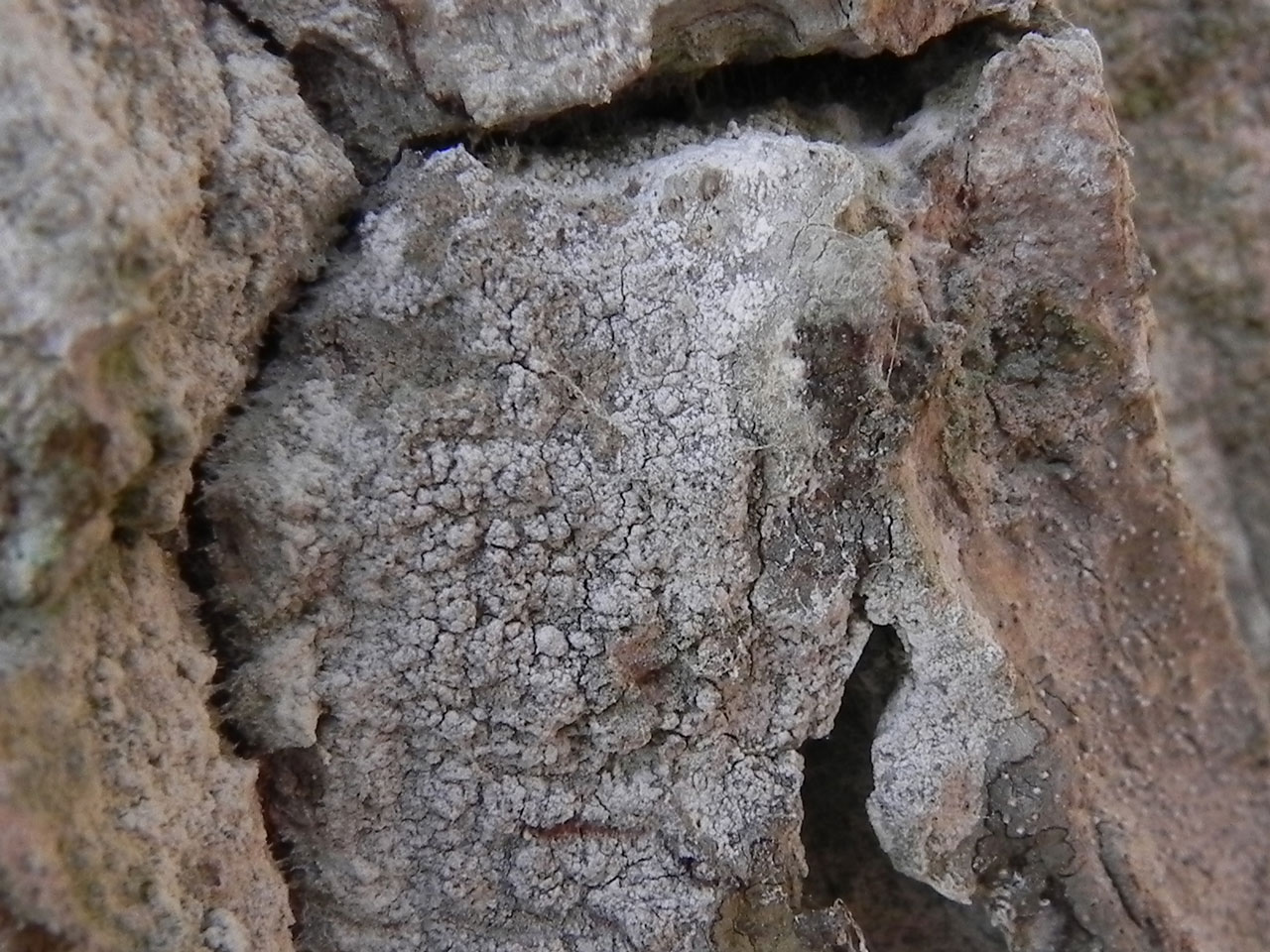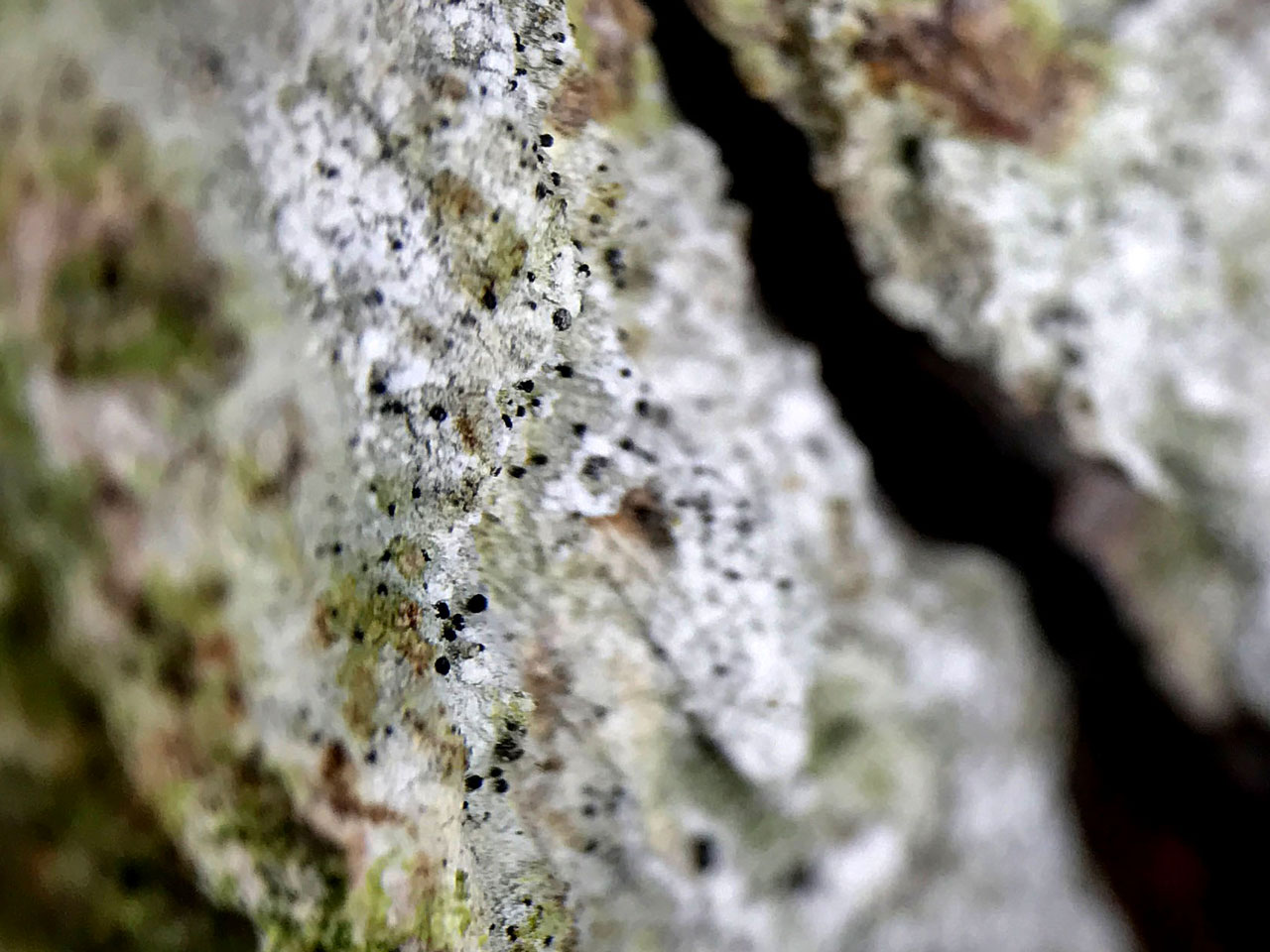Sporodophoron cretaceum
Sporodophoron cretaceum is a distinctive white crust found on the dry sides of older trees in the south and west, covered by powdery sporodochia when well developed. It can be confirmed by a K+ bright lemon yellow spot test.
Thallus wide-spreading, thick and ± tartareous, whitish grey at first, becoming pure chalk-white due to the confluence of sporodochia, continuous to rimose, rarely areolate with the areoles flat, angular, 0·5–2 (–3) mm diam.; photobiont trentepohlioid; cells subglobose or ellipsoidal, 10–18 × 6–15 μm, in short chains or single-celled; thallus surface not corticate, powdery-mealy; medulla whitish; prothallus not observed; hyphae covered by numerous tiny colourless crystals that dissolve in K (polarized light). Apothecia and pycnidia unknown. Sporodochia at first delimited but becoming irregular and erose, then covering most of the thallus surface. Conidia formed from colourless hyphae ca 2 μm diam. disintegrating into 1–6-septate fragments of irregular shape, often with a ±submuriform appearance; rounded angular to ellipsoidal, ± constricted at the septa, and often wavy in outline, bent or indistinctly branched, (10–) 11·5–16·5 (–20) × (6–) 7·5–11 (–14) μm, with individual cells rounded to ellipsoidal, rarely short-cylindrical, often ± bent, (4–) 4·5–6·5 (–8) × (3·5–) 4–5·5 (–6) μm, the walls colourless, irregularly thickened, with a distinct gelatinous coating 0·5–1 μm diam., covered by numerous pale granular crystals (polarized light). Chemistry: thallus C–, K+ yellow, KC–, Pd–, UV± dull pale grey, tinged orange (unidentified substances related to lepraric and 2’-O-methlyperlatolic acids).
Distinguished from Snippocia nivea by the starkly white, Pd– thallus.
On well-lit, dry sides of old wayside and woodland trees, including those with some slight nutrient enrichment, forming extensive patches. Often in the Ancient Dry Bark Community (Lecanactidetum premneae) but also in the Base Rich Dry Bark Community (Opegraphetum fuscellae). More mobile than some other veteran tree dry bark specialists and has regularly colonised 200 – 300 year old stands in the New Forest, while species such as Cresponea premnea are rare in such stands but frequent in 300+ year old stands while species such as Lecanographa lyncea absent from the younger stands and confined to 300+ year old stands (Sanderson, 1996 & 2010). Rarely parasitised by Chaenothecopsis retinens.

S. & W. Britain, extending locally to E. Anglica E. & N. Scotland, wisespread in Ireland & also the Channel Islands.
A component of the Ancient Dry Bark Community (Lecanactidetum premneae) for which Britain has an international responsibility. Sporodophoron cretaceum is frequent from south Hampshire to Cornwall, but becomes scarce to the north.
Britain: Notable & International Responsibility species
Scotland: Priority Taxon for Biodiversity in Scotland
Wales: Vulnerable
Cannon, P., Ertz, D., Frisch, A., Aptroot, A., Chambers, S., Coppins, B. J., Sanderson, N. A., Simkin, J. & Wolseley, P. (2020) Arthoniales: Arthoniaceae, including the genera Arthonia, Arthothelium, Briancoppinsia,Bryostigma, Coniocarpon, Diarthonis, Inoderma, Naevia, Pachnolepia, Reichlingia, Snippocia, Sporodophoron, Synarthonia and Tylophoron. Revisions of British and Irish Lichens 1: 1 - 48
Sanderson, N. A. (1996) Lichen Conservation within the New Forest Timber Inclosures. Eastleigh: Hampshire Wildlife Trust.
Sanderson, N. A. (2010) Chapter 9 Lichens. In: Biodiversity in the New Forest (ed. A. C. Newton) 84-111. Newbury, Berkshire; Pisces Publications
Text by Neil A Sanderson, based on Cannon et al (2020)




